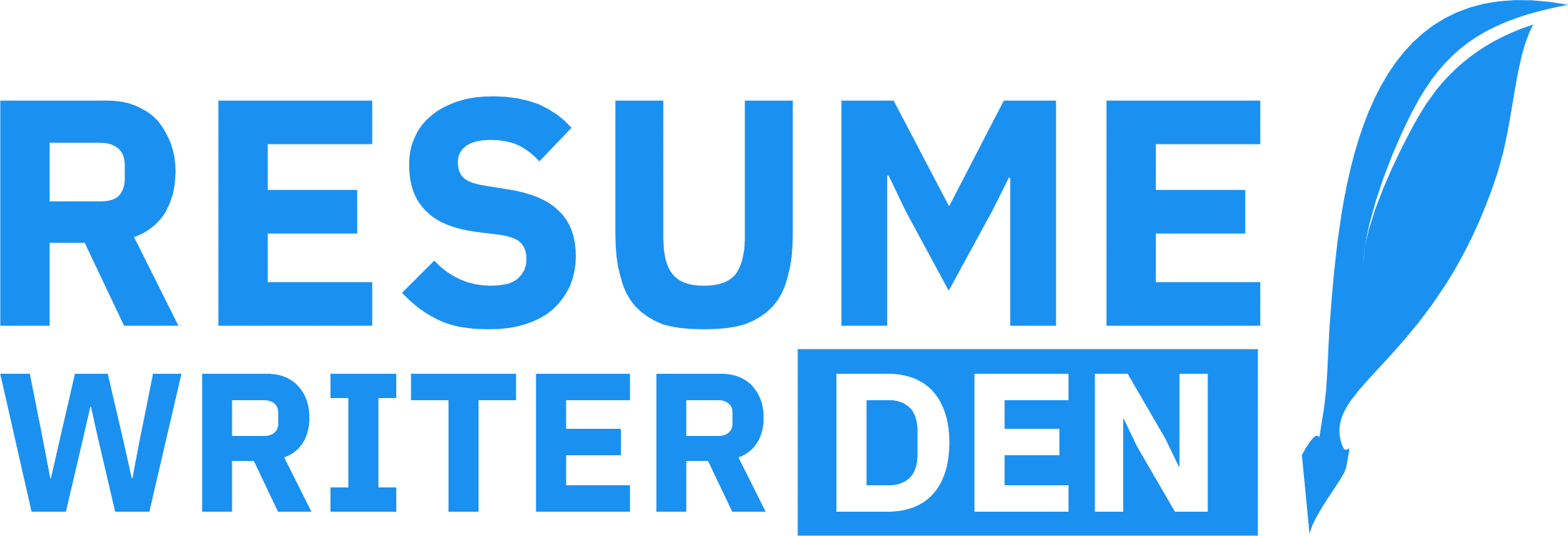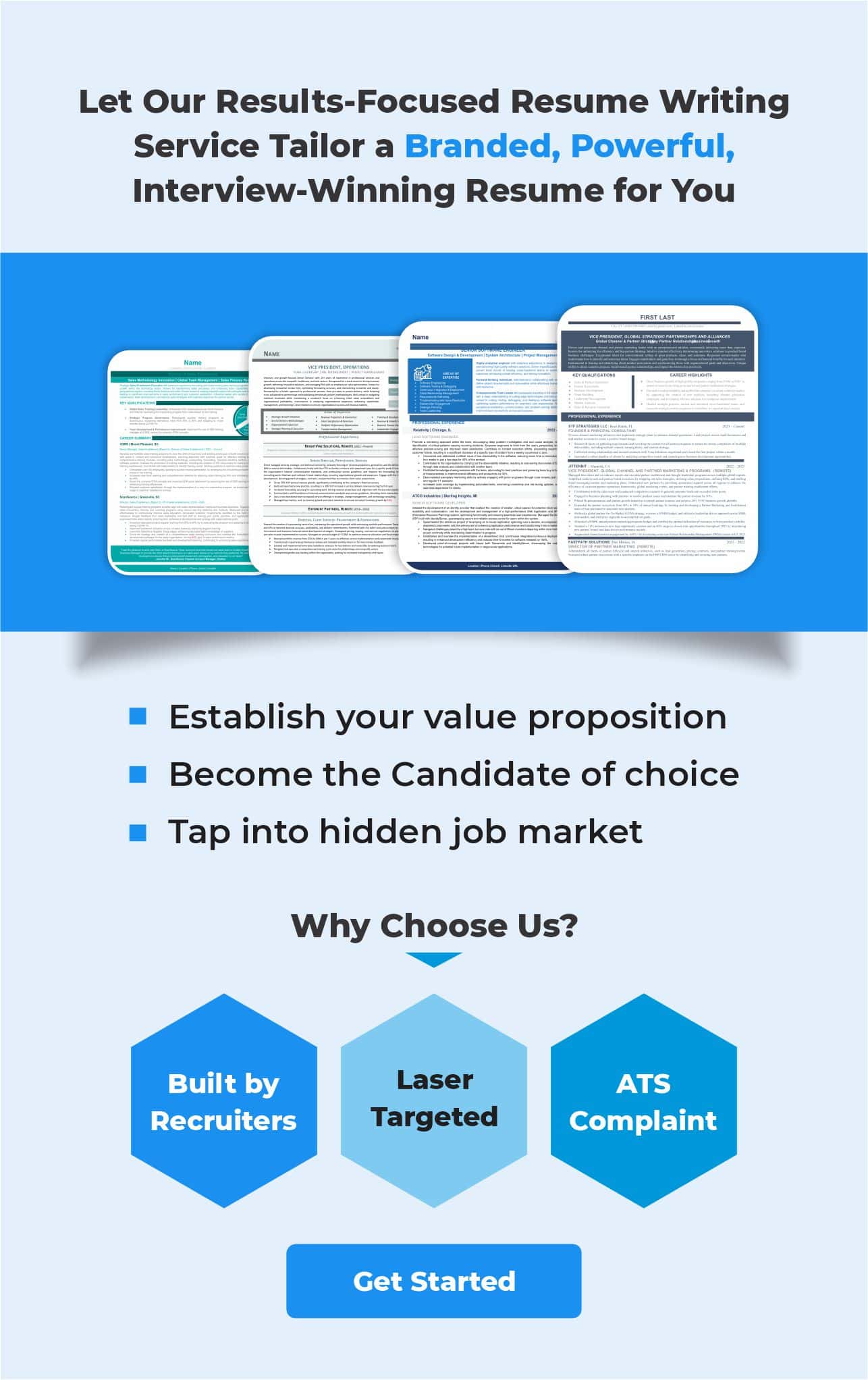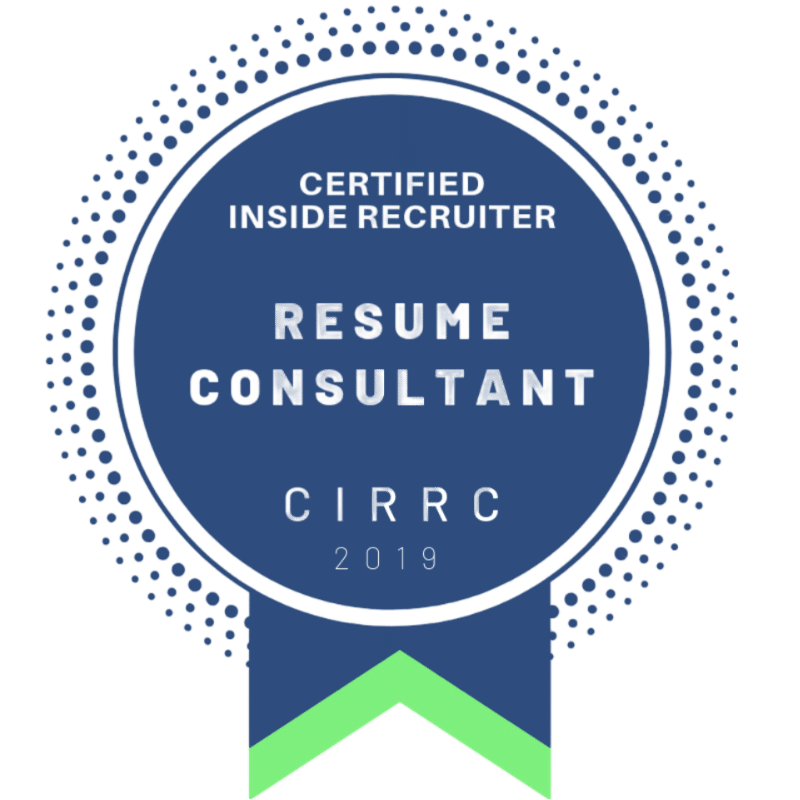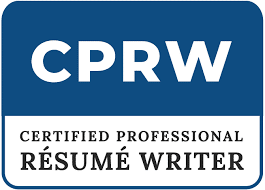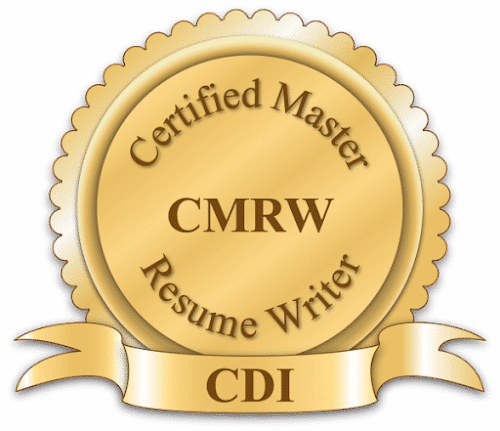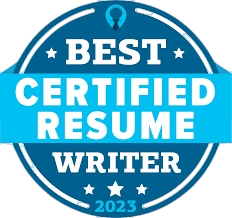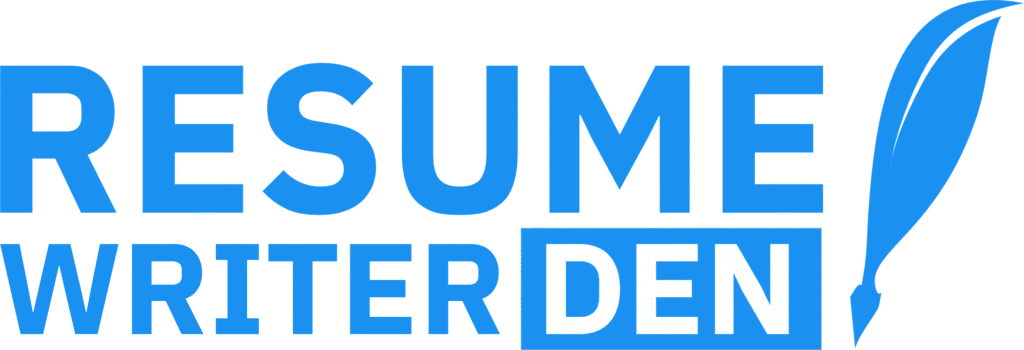Your resume is your first impression in the job hunt. It’s the one document that can make or break your chances of landing an interview and eventually the job. Don’t forget that hiring managers often skim through resumes quickly, so it’s key to make your resume writing process count!
Think of your resume as a snapshot of who you are and what you’ve achieved. It might be the only thing an employer looks at before deciding whether to bring you in for an interview, or it could be paired with your LinkedIn profile, professional bio, or a cover letter.
A standout resume is clear, concise, and showcases your skills and strengths in a compelling way.
To help you write a perfect resume, we’ve got 8 essential resume writing tips from our dedicated resume writers online. While different fields (like healthcare vs. non-healthcare) and other factors like location or your level of education can influence the details, these tips cover the basics that work across the board.
1. Nailing the Format and Feel of Your Resume
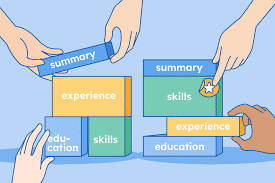
The way your resume looks or formatted can make a big difference in grabbing a recruiter’s attention.
You want it to be appealing and easy to read; otherwise, it might not get the time of day. No one wants to squint at a 6-page resume in 5-point font. Aim for one page (two if you have lots of experience or publications), with clear sections that make it easy to navigate.
Here are some resume writing tips to keep your format clean and professional:
Font Size: Stick with a 9-12-point font. Anything smaller can be tough to read, especially for those who don’t have perfect vision.
Font Choice: Use a simple, professional font. Think Times New Roman, Gill Sans MT, Calibri or similar. Steer clear of overly artistic fonts that can be hard to read.
Margins: Keep side margins around 0.5 inches. Avoid going too big, but don’t make them tiny either—0.75 to 1 inch is a good range.
Spacing: Ensure there’s enough space between lines and sections to keep things from looking cramped.
Dates: Abbreviate the months of employment to save space.
Contact Info: Don’t forget the basics at the top—full name, address, email, and at least one phone number.
Keep it clean, clear, and easy to read. A well-formatted resume is your first step to making a great impression!
2. How to Nail the Resume Contact Section
Your resume’s contact section might seem like a no-brainer, but it’s critical—it’s the gateway for potential employers to reach out to you. Think of it as your personal invitation for them to get in touch.
Here’s how to make it both polished and practical:
Start with the basics: your name, phone number, and professional email address. It’s like setting up a good, old-fashioned handshake—clear and straightforward. Avoid using quirky or outdated email addresses; keep it simple with a format like [yourname]@[domain].com.
Next up, include your LinkedIn profile URL. This is where you can really showcase your professional story. If you’ve got a personal website or portfolio, add that too. It’s like giving them a VIP pass to see your work up close.
Don’t forget your location! You don’t need to provide your full address, but city and state are useful. It tells employers you’re within striking distance without being too specific.
If you’re open to remote opportunities, mention that briefly to keep your options open.
Here’s a quick format that keeps it cool and clear:
Jane Doe
Phone: (123) 456-7890
Email: janedoe@example.com
LinkedIn: linkedin.com/in/janedoe
Portfolio: janedoeportfolio.com
Location: San Francisco, CA (Open to remote work)
This setup ensures that all the essential details are right at the top, making it super easy for hiring managers to reach you.
Keep it neat, keep it professional, and let your contact section be your platinum ticket to the next job opportunity.
3. How to Write the Perfect Resume Summary and Hook ‘Em Right Away
Alright, let’s talk about the resume summary—the opening act of your resume. This is where you give employers a quick peek into who you are and why they should keep reading.
Think of it as your personal elevator pitch, wrapped up in a neat, little paragraph.
So, how do you make it stand out?
Start by asking yourself, “What’s the most impressive thing I can say about my career in a few sentences?” You want to highlight your top skills, biggest accomplishments, and what makes you unique in your field.
It’s like the trailer for a movie—just enough to make them want to buy a ticket.
Keep it short, sweet, and straight to the point. Aim for two to three sentences that showcase your experience and what you bring to the table.
And remember, you’re not just listing job titles; you’re giving them a taste of your expertise and personality.
For example:
“Creative marketing professional with over 5 years of experience in digital advertising and brand strategy. Proven track record of boosting online engagement by 30% and driving sales through innovative campaigns. Passionate about storytelling and creating memorable customer experiences.“
See?
It’s all about packing a punch with a few well-chosen words. Make sure to tailor your summary to the job you’re applying for.
Show them that you’re not just another applicant—you’re the applicant they’ve been looking for.
And hey, don’t be afraid to inject a little personality. If you’re fun and energetic, let that shine through. If you’re serious and detail-oriented, make that clear.
The goal is to hook the reader, so they can’t wait to dive into the rest of your resume.
So, go ahead—craft that killer summary and let your resume do the talking!
Find out: Why you should not rely on AI for your resume writing
4. How to Write Your Resume Education Section and Make It Shine

When writing your resume, you must understand that your education section isn’t just a list of schools—it’s your chance to showcase the qualifications that make you a great fit for the job.
Start by asking yourself, “Am I highlighting the most impressive and relevant parts of my education?” Then consider, “Is this section clear and easy for employers to read?”
How you present this part of your resume can depend on how recently you’ve graduated.
If you’re fresh out of college, employers might be more interested in your academic background. But if you’ve been in the workforce for a while, they might focus more on your professional experience. This can help you decide where to place the education section on your resume. Our entry level resume writers can see you through swiftly on this.
Make sure to list all your higher education, from undergrad to any grad or professional programs. Don’t forget online courses, certificates, and programs like those from Coursera. Typically, you’ll want to list your experiences in reverse chronological order, starting with the most recent.
For each school or program, include its full name, your attendance dates, your major(s) and minor(s) if applicable, and the type of degree you earned (like a BA or MS) with the graduation year.
If you’re about to graduate, mention the expected graduation month and year so employers know when you’ll be ready to start.
Studied abroad? Include those details, too!
Highlight any special academic recognitions, awards, scholarships, or grants you received. If you’ve earned non-academic awards, like for sports or community service, you might want to create a separate section for honors and awards.
Keep it clear, concise, and compelling, and you’ll have employers wanting to know more about you!
Consider the example below:
Education
Bachelor of Arts in Communication Studies
University of California, Los Angeles
Sep 2020 – Jun 2024
- Major: Communication Studies
- Minor: Digital Media
- Honors: Magna Cum Laude, Dean’s List (Fall 2021, Spring 2022)
- Notable Courses: Strategic Communication, Media Psychology, Digital Marketing
- Activities: President, Student Media Club; Writer, Campus Newspaper
Study Abroad Program
University of Sydney, Australia
January 2023 – June 2023
- Program: Media and Communications
- Key Courses: Cross-Cultural Communication, Australian Media Landscape
- Achievements: Recipient of the Global Scholars Grant
Certificate in Digital Marketing
Coursera (offered by the University of Illinois)
Completed June 2022
- Key Skills: SEO, Social Media Marketing, Analytics
This format keeps things clear and organized, making it easy for employers to see your qualifications at a glance. The bold headings draw attention to key details, while the bullet points break down your achievements and experiences in a digestible way.
5. How to Craft the Perfect Resume Skills Section that Grabs Attention
Alright, let’s talk about the Skills section of your resume—the part where you get to show off your superpowers.
Whether you’re a wizard with words or a tech guru, this is where you make sure employers know what you’re bringing to the table.
First off, think of this section as your personal highlight reel. Ask yourself, “What are the skills that make me stand out?” and “How can I present them in a way that’s as easy to read as a text from a friend?”
You want to list your skills in a clean, organized way so they jump off the page (or screen) and into the employer’s brain.
Now, when choosing which skills to include, think about the ones that are most relevant to the job you’re aiming for. It’s like picking the best toppings for your favorite pizza—choose the ones that add the most flavor to your resume.
And don’t forget to mix in both hard skills (like programming or graphic design) and soft skills (like communication or leadership).
Organize your skills in a bullet-point list. This makes them easy to scan quickly, which is exactly what a hiring manager will be doing.
Start with your strongest skills and, if you have space, add a few more that showcase your versatility.
Here’s a pro tip: Tailor your skills list to match the job description. If the job ad mentions they’re looking for someone who’s great with Excel, make sure “Excel wizardry” is front and center.
But keep it honest—only list skills you’re actually confident in, because nobody wants to be caught in a fib during an interview.
To make your skills really shine, you can categorize them if you have a mix of different types.
For example, split them into sections like “Technical Skills” and “Interpersonal Skills.” This not only looks neat but also helps employers find what they’re looking for faster.
Here’s an example of a killer skills section:
Highlight of Skills
Digital Marketing: Expertise in SEO, SEM, and social media strategies. Increased website traffic by 40% through targeted campaigns.
Graphic Design: Proficient in Adobe Creative Suite (Photoshop, Illustrator, InDesign). Designed promotional materials for a national marketing campaign.
Data Analysis: Advanced Excel (VLOOKUPs, pivot tables), SQL, and Tableau. Conducted data-driven market research that informed key business decisions.
Project Management: Certified PMP with experience leading cross-functional teams. Successfully managed projects with budgets up to $500K.
Communication: Excellent written and verbal skills. Presented quarterly reports to executive leadership and led training sessions for new hires.
Never forget, the Skills section is your chance to shout, “Hey, look what I can do!” So, make it pop, keep it relevant, and let your skills do the talking.
6. How to Write Your Resume Experience Section to Pop- Saying “Hire Me Now”
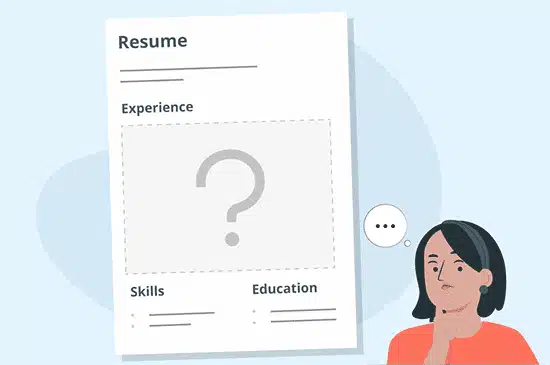
Your experience section is your chance to show you’ve got what it takes for the job, right alongside your skills and education.
Think of it as your professional highlight reel, showcasing the best of what you’ve done, whether it was paid work or not.
Lay out your roles and accomplishments clearly for each job, and make sure to highlight how your past gigs line up with the role you’re gunning for.
Include the start and end dates, key accomplishments, and don’t skimp on the location details—city, state, or even country if it’s not your home turf.
Ask yourself: Did you snag any awards, get a shoutout, pioneer a project, or make an impact?
Quantify your achievements when you can! Remember the golden rule: “Show, don’t tell.” Concrete examples beat vague statements any day.
For instance, instead of saying:
“Improved worker productivity significantly, leading to recognition from upper management.”
Try:
“Boosted quarterly returns by 25%, surpassing projections and earning the Top Manager Award, which is given to only one manager each year.”
Be honest about your job functions, but spin them in a professional, appealing light.
If you think your job or internship sounds dull, think again.
Even if it felt like “sitting at a desk, answering the phone,” you might have been building valuable skills or handling more than you realized.
Were you at the FRONT desk? Maybe the only person in that role? Did you oversee anything or handle special tasks? Did you deal with customers and their issues? Did you occasionally take on extra responsibilities?
Sitting at a front desk might mean you were actually MANAGING it or running the show when your boss was away. Even short-term leadership or responsibility shows you can handle a role.
Review your accomplishments and ask yourself:
- What did I do in this job?
- How did I do it?
- With what resources?
- With whom did I work?
- What was the impact?
You may need to trim down your list to keep your resume sharp. Choose accomplishments that are both impressive and relevant to your target job.
Each bullet point should be concise—one or two lines max. Rephrase and streamline descriptions to pack a punch with minimal words. The clearer and more concise your information, the better the employer will understand what you bring to the table.
Following the details of your experiences effectively, you’ll give potential employers a solid grasp of your qualifications and give them plenty to chat about during an interview.
7. Crafting a Leadership and Activities Section That Shines
Hey there! For many, especially students and recent grads, a Leadership & Activities section can be your secret weapon on your resume.
If you’re just starting out or have only dabbled in summer and part-time gigs, this section can fill in the blanks and show employers a bit more about who you are.
When putting this together, start by listing the student organizations and activities that truly resonate with you. Think about what you want to highlight for each. This section is like the Experience section but focuses on what you’ve done outside of work.
Keep it professional though! Choose experiences that reflect well on you—save the “Top Drinker” title from the college beer keg club for another time.
Highlight things like volunteering at a food bank, contributing to a school publication, or being part of an honor society. For instance, if you were the editor of your college newspaper, mention how you led a team to increase readership by 30%—that’s a standout achievement!
Focus on where you made a real impact or took on leadership roles.
Just like with job experience, think about what you did, any responsibilities you had, skills you used, and knowledge gained. If you improved something or led an initiative, flaunt those concrete examples!
And, if any of these experiences relate to the job you’re applying for, make sure to connect those dots.
Student activities can provide leadership opportunities that rival those of seasoned pros, so use this section to not only show you’re a great fit but that you have even more potential.
Shine a light on what you’ve achieved and show employers what you’re truly capable of!
8. Revision and Review
Here’s where the magic happens—giving your resume a final once-over. A tiny typo or grammar slip might make you seem like you’ve missed the details, and nobody wants that!
Start with those trusty spell-check tools, but don’t stop there. They’re great for the basics but can miss things like homophones (think “hair” vs. “hare”) or specialized jargon. Plus, they won’t catch formatting hiccups or how your resume looks overall.
The human eye, however, is unbeatable.
Print out your resume and go through it with a keen eye. Then, hand it to a couple of folks: a buddy and a seasoned pro or mentor. Each will bring a fresh perspective and spot different issues.
Ask them to give you two kinds of feedback: technical fixes and thoughts on writing, organization, and impact.
When you get their notes, chat about them—but remember, it’s not personal! They’re aiming to help you polish up your resume so it shines to employers.
Once you’ve got their input, make the improvements and take another look. Their suggestions might spark even more ideas for enhancement.
The goal?
A standout resume that grabs attention and scores interviews. So, don’t let minor mistakes trip you up.
For a resume that gets you noticed and lands those interviews, consider teaming up with the best resume writing services—the ultimate Den of Resume Writers. Your perfect resume is just an order away!
Bonus- Quick Resume Tips to Note!
Want to stand out? Tailor your resume to the job description—make it match! Stick with a clean, consistent format. Use powerful action verbs and specific details to highlight your achievements, not just your duties. Revise with a fine-tooth comb—every detail counts!
Skip the personal stuff like age, religion, or marital status. Photos? Not a great idea for U.S. resumes. Don’t stress about listing past salaries—focus on what you can bring to the table. References? Just mention they’re available upon request.
Finally, remember, employers might use keyword scanners such as (Application Tracking Softwares) ATS, so make sure you’re hitting the right notes for the industry and role.
Need more help? Check out our online resume writing services today—where we turn your resume into a masterpiece!
